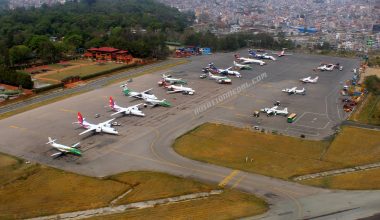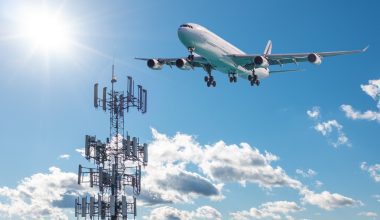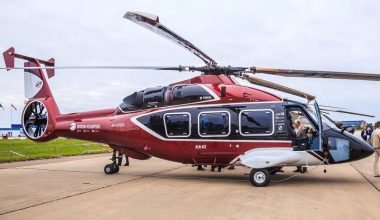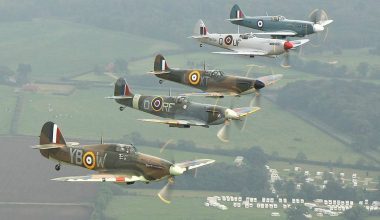Biman Bangladesh operated commercial passenger flights for the DC-10 in February 2014 for the final service. There are 19 of the DC-10 for cargo operations still in service with Federal Express (FedEx). There are 59 DC-10 aircraft (designated KC-10) in the United States Air Force currently in existence during military operations. Four DC-10s are distinct from all other DC-10s as they are used as aerial firefighters operated by 10 Tankers to counter forest fires. Orbis International is still operating 1 DC-10 as a flying eye hospital where eye surgery is performed.

The McDonnell Douglas DC-10 is a McDonnell Douglas-manufactured American wide-body airliner. The DC-10 was planned to replace DC-8 for long-range flights. It first flew on 29 August 1970; it was launched on 5 August 1971 by American Airlines.
The entire fleet’s grounding made existing Air Operators and prospective customers evaluate their choices and eventually decided to cancel the aircraft’s orders. This event forced McDonnell Douglas to shut down production. Another reason for its downfall was that newer jets made on that generation were operating on a lighter airframe and more efficient engine, making the DC-10 an expensive choice to operate and maintain compared to newer passenger aircraft.
Currently, the remaining DC-10 has found its new purpose and is now widely used as a military air tanker by the US US Air Force and cargo aircraft by FedEx.

McDonnell Douglas was a prominent American aircraft manufacturer and defense contractor founded in 1967 by the merger of McDonnell and Douglas Aircraft. It produced several well-established militaries and commercial aircraft such as the DC-10, the F-15 Eagle air superiority, and the F / A-18 Hornet Multirole Fighter between another time and its merger with Boeings in 1997.
Evolution
American airliners made it clear to aircraft manufacturers back in 1966 that they were looking for a bigger passenger aircraft, but smaller than the Boeing 747. However, the aircraft should have a more extensive range, like a 747. This will make it easier to open up new markets for wide-body passenger transport.
In 1967, the Douglas Aircraft Company and McDonnell Aircraft merged the same year. The new jet, DC-10, was designed to replace the Douglas DC-8 on mid-to long-haul routes and intercontinental routes. The design was based on three engines, one on each wing and one on the tail fin base. The tail engine was straight through the nacelle (a streamlined casing on the outside of an aircraft), carried just above the fuselage, and the tail fin was attached to the top. Horizontal stabilizers were attached to the back of the fuselage.

On 19 February 1968, the President of American Airlines, George A. Spater and James S. McDonnell of McDonnell Douglas, announced the plan of American Airlines to join the DC-10. This surprised Lockheed, who was trying to put their very similar, L1011 Tri-Star to market. Americans selected the Rolls Royce RB211 engine, and the DC-10 project was launched. The American Airlines ordered 25 aircraft, followed shortly afterward by United Airlines in 1968, with 30 aircraft and an option for 30 more. The maiden flight of the DC-10-10 took place on 29 August 1970. The Federal Aviation Administration (FAA) awarded the type certification on 29 July 1971.
American Airlines flew the first DC-10 commercial service on 5 August 1971 with a flight from Los Angeles to Chicago. United followed shortly afterward, with its first service, on 16 August 1971. American Airlines had a slightly larger layout of 206 seats compared to the United Airlines 222. Both airlines had a configuration of 6 seats in the first-class and eight seats in the economy.
Specs and Operators of DC-10
There are a total of 8 variants of McDonnell Douglas DC-10. Among them, DC-30 was the most famous and most sold variant with 163 aircraft. All aircraft variants had the maxing seating capacity of 399, a width of 6.02 m, a fuselage of 224 inches, and a cruising speed of 473 knots. The aircraft required two pilots and 1 flight engineer in the cockpit.
| DC-10 -10 | DC-10-30 | DC-10-40 | |
| Length | 55.55 m | 55.35 m | 55.54 m |
| Height | 17.53 m | 17.55 m | 17.55 m |
| Wingspan | 47.35 m | 50.39 m | 50.39 m |
| Engines | General Electric CF6-6D | General Electric CF6-50C | Pratt & Whitney JT9D-59A |
| Range | 6,500 km | 9,600 km | 9,400 km |
The production DC-10 ended in 1988, and they produced about 446 aircraft in a period of 18 years. Biman Airlines of Bangladesh was the last commercial user to operate DC-10 in passenger service in 2014.
Accidents and Further change
The DC-10 did not have the best start. It had a poor safety record as compared to other aircraft. In the same year, 1970, Lockheed launched its L1011 Tri-Star, which was very similar in design to the DC-10. The L1011 Tri-Star was probably a better plane, but the DC-10 was cheaper to buy. So far, DC-10 was involved in 55 accidents and incidents, including 32 hull-loss (means aviation accident) accidents with 1,261 occupant fatalities. It has also been involved in 9 hijacking cases with one death and a bombing resulting in 170 occupant fatalities.

One of the main reasons behind the accident was the cargo door problem. On most aircraft, the cargo door opened inward so that, when it is closed, the door would be forced into its seals by higher internal pressure. The disadvantage of this design was a lack of space inside. The DC-10, on the other hand, had an outside opening door. This allowed the extra space to be used for storage, but the external pressure meant that the door was dependent on its fastening mechanisms.
The National Transportation Safety Board (NTSB) made a variety of recommendations, the key ones being that air vents should be built between the cargo hold and the passenger cabin to allow air pressure to be equalized in the event of a loss of pressure in order to prevent the cabin floor from collapsing again. They also suggested that the locking mechanism’s nature be changed to avoid the closed indicator’s ability to indicate that it was locked when it was not. These recommendations were not mandated, and a gentleman’s agreement was reached between the Chiefs of the FAA, John H. Shaffer, and McDonnell Douglas, Jackson McGowen. McDonnell Douglas made improvements, but the architecture remained unchanged.

On 06 June 1979, the FAA removed the type certification of all DC-10-10s and grounded the type. This was a significant blow to McDonnell Douglas, who worked quickly to improve the slat locking mechanism and adjust the slats’ power sources. On 13 July 1979, the FAA renewed its approval.
The case of the separate pylon (which connects the engine to the airframe) was traced back to the non-standard procedures followed by American Airlines and Continental Airlines. The engine’s procedure was to be separated from the pylon and the pylon to be separated from the wing. To save almost 200 working hours, both airlines used a forklift (truck used to lift or move materials) to remove the whole assembly in one goes when the engine was removed. This was a very unreliable operation, as the forklift driver had to rely on others’ eyes, as he could not see the intersection from where he was sitting. It was straightforward to harm the assembly if it was not perfectly balanced. Both airlines have been heavily fined.
In 1974, Turkish Airlines DC-10 crashed 10 minutes after its departure from Paris, killing 346 passengers.271 people died on 25 May 1979 when American Airlines DC-10 crashed in Chicago. The cause was described as a short-cut maintenance procedure that damaged hydraulic lines. These two were the most significant DC-10 accident in the history of aviation.
The DC-10 was followed by the MD-10 and then the MD-11, which were slightly larger and revised versions. In 1997, Boeing merged with McDonnell Douglas and converted the MD-11 to a glass cockpit, removing the need for a flight engineer. The DC-10 was an ordinary aircraft, loved by pilots and passengers alike, but many passengers used to think twice before going on onboard this aircraft due to many accidents.
The McDonnell Douglas made DC-10 aircraft is considered a classic workhorse of early commercial aviation. Its wide-body fuselage design was considered a game-changer in its era as it allowed to carry more passengers and provide a cabin seat configuration that has more leg space for passengers, which provided better passenger comfort and experience.
The DC-10 aircraft was designed as a successor to the DC-8 but also a competitor to another American manufactured aircraft, which was the Boeing 747. Its design difference that attracted Air Operators to commit and purchase the aircraft increased passenger and cargo payload and only limited increase in fuel consumption. It is only designed with three engines instead of the four engines incorporated into its competitor, the Boeing 747.
DC-10 Variants
The aircraft production started in 1968 and saw different variants’ development to attract more operators to purchase and operate the aircraft. The -10 variant, which was the considered original design, was built entirely for passenger transport; this variant received the most order from Air Operators during its production span. This variant’s spinoff is the -10CF, which allowed converting the aircraft from a passenger to freighter aircraft. This idea came from the demand of a logistics company that needed an aircraft design capable of carrying the goods they need to transport in bulk.
The -15 variant is designed for high altitude and high-temperature operation. This was most applicable to Air Operators who conduct an operation in high altitude airports, deserts, and tropical climate. Other long-range variants were also designed for operators interested in operating the aircraft on routes with more extended range.
The DC-10 aircraft became a famous cargo transport aircraft. It is widely used by FedExpress to complement its fleet of cargo aircraft. Another significant milestone of the aircraft is its advanced military tanker aircraft designed to provide air-to-air refueling. It can also be reconfigured as a tanker to hold fire suppression fluid to fight wildfire.
Notable Accidents of DC-10

The primary concern that eventually resulted in the eventual loss of trust of operators and the stopping of its production is the fatal crashes that were eventually attributed to a design error. In particular, it was the FAA’s intervention to ground the whole fleet of DC-10 worldwide due to concerns that the rear cargo door’s structural design was not sound. This came after a catastrophic accident from Turkish Airline Flight 981, resulted in the death of all 346 people on board the aircraft and the last nail in the coffin which was American Airlines Flight 191 with 273 fatalities and which is still considered up to this day as the worst aviation accident to happen in the mainland USA.






